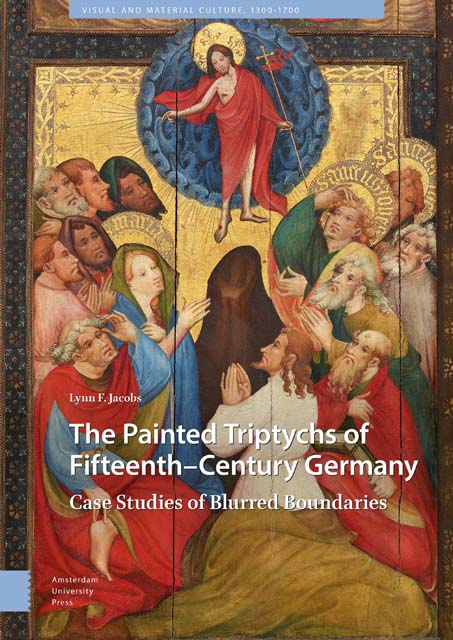Book contents
- Frontmatter
- Dedication
- Table of Contents
- List of Illustrations
- Acknowledgements
- Introduction
- 1 Framed Boundaries: Conrad von Soest and Early Fifteenth-Century Westphalian Triptychs
- 2 Transparent Boundaries: Colour on the Exterior of German Fifteenth-Century Triptychs
- 3 Regional Boundaries : Rogier van der Weyden’s Columba Altarpiece and Cross-Influences Between the Netherlands and Cologne
- 4 Spiritual Boundaries : The Master of the St. Bartholomew Altarpiece and the Border between Reality and Eternity
- 5 Coda: The Triptych in the Age of Dürer
- Bibliography
- Index
5 - Coda: The Triptych in the Age of Dürer
Published online by Cambridge University Press: 16 November 2022
- Frontmatter
- Dedication
- Table of Contents
- List of Illustrations
- Acknowledgements
- Introduction
- 1 Framed Boundaries: Conrad von Soest and Early Fifteenth-Century Westphalian Triptychs
- 2 Transparent Boundaries: Colour on the Exterior of German Fifteenth-Century Triptychs
- 3 Regional Boundaries : Rogier van der Weyden’s Columba Altarpiece and Cross-Influences Between the Netherlands and Cologne
- 4 Spiritual Boundaries : The Master of the St. Bartholomew Altarpiece and the Border between Reality and Eternity
- 5 Coda: The Triptych in the Age of Dürer
- Bibliography
- Index
Summary
Abstract
This chapter considers developments in the triptych during the sixteenth century, focusing on triptychs produced by Dürer, Hans Baldung Grien, and Lucas Cranach the Elder. Triptych production declined significantly during this time due to the influence of Italian Renaissance single-panel altarpiece design, as well as the overall decline of religious art due to the Reformation's association of art and idolatry. Nevertheless, the examples considered here demonstrate that sixteenthcentury triptych production in Germany did include works that continued to explore the Medialität of the format and exploit transparency through the closed and open views. Cranach was even able to transition the triptych into usage as a Lutheran altarpiece, while still exploiting the triptych's potential for creating layered resonances of meaning.
Keywords: Albrecht Dürer, Hans Baldung Grien, Lucas Cranach the Elder, Reformation, Renaissance
In the age of Dürer, the sixteenth century, the spaces of contested boundaries significantly shifted. Whereas fifteenth-century German artists generally interrelated with artistic currents from the Netherlands, now the connections with Italy strengthened and German artists came into closer contact with Italian Renaissance stylistic and intellectual developments. And whereas fifteenth-century German artists still worked within the confines of medieval views of the artist as a craftsman, sixteenth-century artists had a new self-awareness of their status as intellectuals and humanists, which was linked to early modern conceptions of the self and to an overall sense of modernity that arose after the year 1500. Moreover, the Reformation movement, which was centred in the German-speaking territories and arose in the early decades of the sixteenth century, shattered the concept of a Christian Europe unified under the Roman Catholic Church and established new boundaries between Protestants and Catholics. In addition, the reformed view that religious art works were idolatrous forced art (in reformed regions) to take on new roles and new subject matter, as well as to shift toward a greater focus on the print medium.
Sixteenth-century German artists were much less interested in the ‘medium’ or format of the painted triptych. While there could be and were portrait triptychs, the format had its strongest associations with altarpieces and religious objects, and hence became problematic with the onset of the Reformation.
- Type
- Chapter
- Information
- The Painted Triptychs of Fifteenth-Century GermanyCase Studies of Blurred Boundaries, pp. 255 - 284Publisher: Amsterdam University PressPrint publication year: 2022



